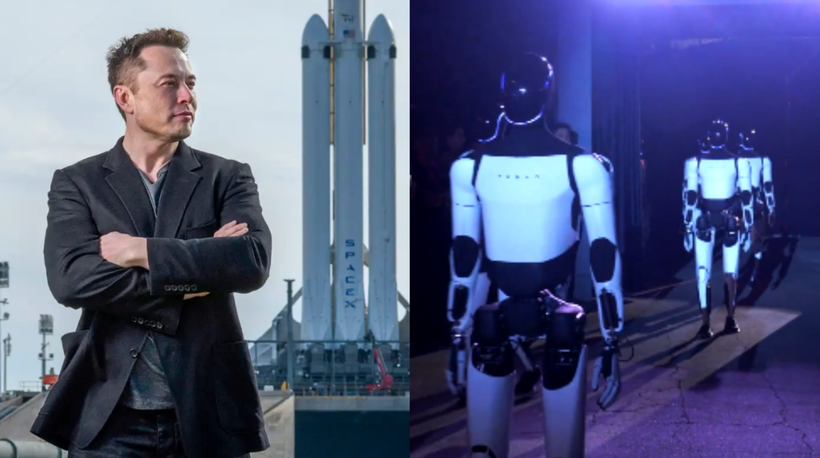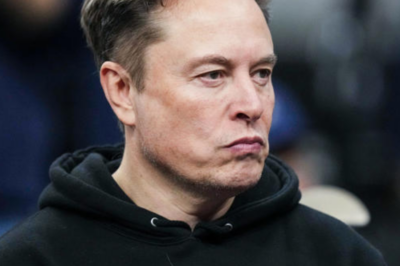Elon Musk’s robot could ‘die’ on Mars – expert warns of reckless plan
Robotics experts warn that Elon Musk’s Optimus robot could become “scrap metal” on Mars, threatening the American billionaire’s space settlement plans.
 Elon Musk has repeatedly talked about plans to send humanoid robots to Mars. Photo: Getty.
Elon Musk has repeatedly talked about plans to send humanoid robots to Mars. Photo: Getty.
Elon Musk’s plan to send robots to Mars may not go as smoothly as he hopes, according to a leading expert in robotics.
In an interview with Forbes, Christian Hubicki – head of the Optimal Robotics Laboratory at Florida State University – warned that the American billionaire’s robots would likely quickly become “scraps of metal and plastic” if left alone on the Red Planet.
“Humanoid robots fall over, they break, their software freezes,” Hubicki explained. “Right now, humanoid robots aren’t even reliable enough to operate autonomously on Earth, let alone on Mars.”
In recent times, Musk has shifted Tesla’s focus heavily towards robotics and artificial intelligence (AI).
Last year, the SpaceX founder launched Tesla’s Robotaxi service – which he promised investors would add trillions of dollars to the company’s value. But these low-cost self-driving cars have yet to prove they can operate safely without human intervention.
Another piece of Musk’s vision is a humanoid robot – the flagship of which is called Optimus. According to Musk, Tesla plans to produce up to 100,000 Optimus units per month next year.
However, the Optimus introduction video released by Tesla last month showed many obvious limitations: the robot took a long time to answer simple questions, and even “froze” in the middle. Previously, promotional videos had shown Optimus could fry eggs and dance.
Still, Musk decided to include these unfinished robots in his most ambitious plan: colonizing Mars.
In April, he announced that Optimus would be sent to Mars aboard a Starship rocket by the end of 2026. The robots would explore the surface of the planet and prepare infrastructure for humans. Musk recently reiterated that goal, admitting that “everything has to go perfectly,” but still gave a not-too-distant timeline.
“The first unmanned flight is likely in about 3.5 years, the second with humans in about 5.5 years,” Musk posted on Twitter in August. “A self-sufficient city on Mars could be built in 20–30 years.”
However, according to Mr. Hubicki, space agencies like NASA have used humanoid robots in space before, but under completely different conditions.
“For NASA, those robots are only deployed on the space station – where humans are on hand to fix them when they have problems,” he told Forbes.
“The important thing is that on the International Space Station (ISS), there are always humans to support and fix the robots when they have problems. On Mars, there is no one to save them, and transporting spare parts is almost a nightmare,” he stressed.
“Without a quantum leap in technological reliability, a single humanoid robot operating on Mars will not survive for long,” he concluded.
News
Rory McIlroy, Scottie Scheffler, Tommy Fleetwood, Ben Griffin nominated for PGA Tour’s 2025 Player of the Year award
The PGA Tour has announced Scottie Scheffler, Rory McIlroy, Ben Griffin and Tommy Fleetwood on its shortlist for Player of…
Elon Musk’s X fined 120 million euros by EU
Elon Musk’s X fined €120m by EU in first clash under new digital laws Ruling likely to put European Commission…
It’s official: Michael Bublé is going country.
Michael Bublé Reveals Major Career Shift With Surprise Country Album: All the Details The Voice star spilled on Kylie Kelce’s podcast that…
Post Malone is honored as a headlining artist at the Super Bowl concert.
Country Music Superstar Named Super Bowl Concert Headliner You’ve certainly heard that not everyone is on board with Bad Bunny…
“If you can’t beat ’em, join ’em”: The candidate ‘disparages’ country music but covers Dolly Parton’s song
Defeated Candidate in Tennessee Congressional Race Who Trashed Country Music Covers Dolly Parton Song I guess the old saying, “If…
Keith Urban looked haggard and exhausted in a recent appearance as the reality of his divorce slowly dawned on him.
Keith Urban Looks Drained Amid Fears He ‘Made A Huge Mistake’ Leaving Nicole Kidman Keith Urban appeared exhausted upon arriving in…
End of content
No more pages to load












